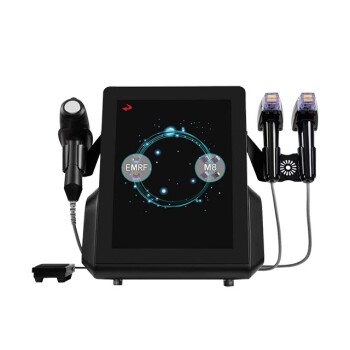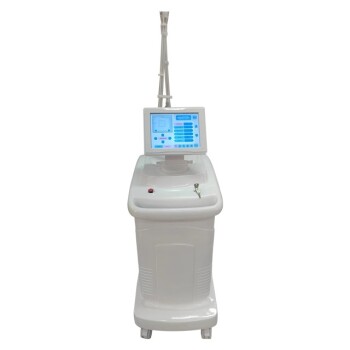While modern skin tightening procedures are generally considered safe, they are not without potential disadvantages. The primary drawbacks range from common, temporary side effects like swelling, bruising, and changes in skin sensation to more significant risks associated with intensive treatments, including thermal burns, scarring, and undesirable changes in your skin's contour.
The core trade-off with any skin tightening treatment is one of risk versus reward. Less invasive procedures offer lower risk and minimal downtime but deliver more modest results, while more invasive options provide dramatic changes but carry a higher potential for significant side effects.
The Spectrum of Skin Tightening: Risk vs. Reward
Understanding the disadvantages begins with recognizing that "skin tightening" is not a single procedure. Treatments exist on a spectrum, and the potential risks are directly proportional to how aggressively the technology treats your tissue.
Non-Invasive Treatments: Surface-Level Effects
These treatments (e.g., external radiofrequency or ultrasound) deliver energy to the deeper layers of the skin without breaking the surface.
Their disadvantages are typically mild and short-lived. This includes temporary redness, minor swelling, and a feeling of warmth or tenderness in the treated area, usually resolving within hours or a few days.
Minimally-Invasive Treatments: Deeper Impact, Higher Stakes
These procedures (e.g., radiofrequency microneedling, RFAL) penetrate the skin's surface to deliver energy more directly. While often more effective, they carry a greater risk profile.
Here, the potential for more significant side effects like bruising, prolonged swelling, and temporary changes in sensation becomes more pronounced.
Key Disadvantages and Risks Explained
Whether mild or significant, it is crucial to understand the specific risks before committing to a procedure.
Temporary Side Effects: The Expected Downtime
Bruising and swelling are common, especially with minimally-invasive techniques. While they typically resolve on their own, they constitute a period of social downtime that must be planned for.
Thermal Injury and Burns
Nearly all skin tightening technologies use controlled thermal energy to stimulate collagen. If the device is used improperly or malfunctions, this energy can cause a thermal burn to the skin's surface or underlying tissue.
This is one of the most serious risks, as it can lead to permanent scarring and discoloration.
Changes in Sensation or Nerve Damage
Nerves can be affected by the heat or physical trauma of a procedure, especially those that go deeper into the tissue.
This can result in temporary numbness, tingling, or hypersensitivity in the treated area. While usually temporary, permanent changes are a rare but possible risk with more aggressive treatments.
Contour Irregularities and Asymmetry
A major goal of skin tightening is a smooth, firm contour. However, uneven energy delivery, improper technique, or an asymmetrical healing response can lead to the opposite.
This can manifest as lumps, divots, or a generally uneven or "lumpy" appearance, which can be very difficult to correct.
Scarring and Pigmentation Changes
Any procedure that breaks or significantly heats the skin carries a risk of scarring. This is particularly true for individuals with a history of keloid scarring.
Furthermore, the inflammation caused by the treatment can trigger post-inflammatory hyperpigmentation (dark spots), a risk that is significantly higher for individuals with darker skin tones.
Understanding the Trade-offs: Factors That Increase Risk
The likelihood of experiencing these disadvantages is not random. It is influenced by several critical factors that are, to some degree, within your control.
Practitioner Skill and Experience
This is the single most important variable. An experienced, highly-trained provider understands the nuances of the technology, can accurately assess your candidacy, and knows how to adjust technique to minimize risk and manage complications if they arise.
Choice of Technology
Some devices are inherently more aggressive than others. A skilled practitioner will recommend the specific technology that best matches your goals and skin type, balancing effectiveness with an appropriate safety profile.
Individual Health and Lifestyle Factors
Your body's ability to heal is paramount. Conditions that impair healing, such as autoimmune diseases or diabetes, can increase risk.
Smoking is particularly detrimental, as it constricts blood vessels, reduces oxygen flow to the tissue, and dramatically increases the risk of poor healing, infection, and scarring.
Making an Informed Decision
Choosing the right path requires a clear understanding of your personal goals and risk tolerance.
- If your primary focus is safety with minimal downtime: Start with non-invasive options and accept that results will be subtle and may require multiple sessions.
- If your primary focus is significant, noticeable results: Minimally-invasive procedures are more effective but require you to accept a higher risk profile and plan for a longer recovery.
- If you have a darker skin tone or a history of poor healing: It is essential to find a provider with documented experience treating your specific skin type to minimize the risks of pigmentation and scarring.
Ultimately, a successful outcome depends on a thorough consultation with a qualified expert who can help you weigh these potential disadvantages against the desired benefits.
Summary Table:
| Disadvantage | Commonality | Severity | Typical Duration |
|---|---|---|---|
| Bruising & Swelling | Common | Mild to Moderate | Days to a Week |
| Changes in Sensation | Common | Mild | Temporary (usually) |
| Thermal Burns | Less Common | Moderate to Severe | Can be Permanent |
| Contour Irregularities | Less Common | Moderate to Severe | Can be Permanent |
| Scarring & Pigmentation Changes | Less Common (higher risk for darker skin) | Moderate to Severe | Can be Permanent |
Ready to achieve safe, effective skin tightening?
Navigating the risks requires expert guidance. BELIS specializes in providing medical aesthetics clinics and premium beauty salons with professional-grade equipment known for its safety profiles and precise energy delivery. Our experts can help you select the right technology for your clients' needs, minimizing disadvantages while maximizing results.
Contact our specialists today to discuss how our solutions can enhance your service offerings and build client trust through superior outcomes.
Related Products
- RF Microneedling Machine Micro Needle Radio Frequency Machine
- RF Microneedling Machine Micro Needle Radio Frequency Machine
- 12D HIFU Machine Device for Facial HIFU Treatment
- 4D 12D HIFU Machine Device for Skin Tightening
- Cryolipolysis Fat Freezing Machine and Ultrasonic Cavitation Device
People Also Ask
- Is it safe to use an RF machine at home? How to Use Consumer Devices Safely
- What machine is best for skin tightening? Match the Right Technology to Your Skin's Needs
- How often do you need RF? Achieve Optimal Skin Tightening with the Right Schedule
- Do anti-aging frequencies work? The Science Behind Clinically-Proven RF Treatments
- What does an RF machine do? Stimulate Your Skin's Natural Regeneration for Firmer, Tighter Skin



















